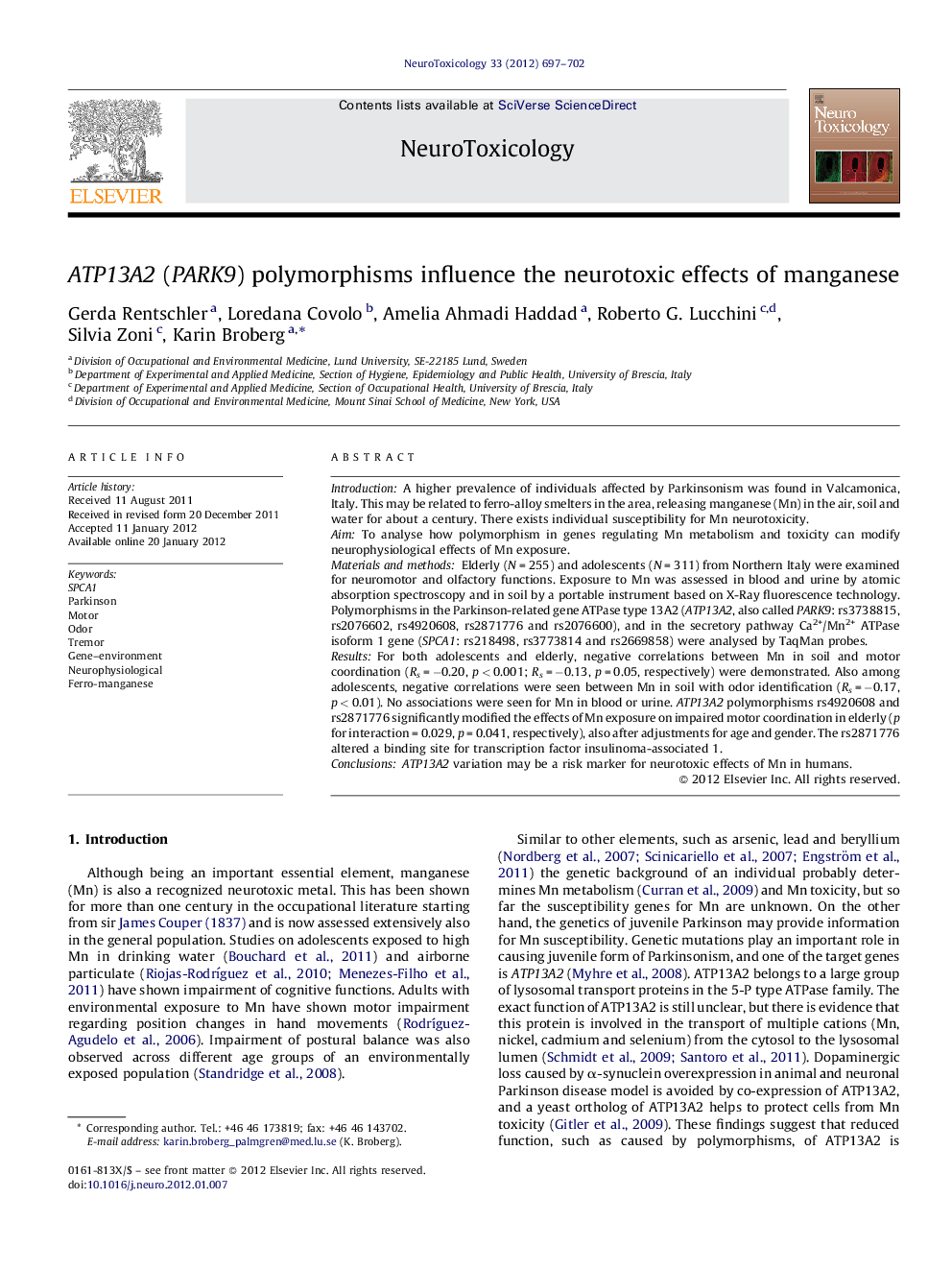| Article ID | Journal | Published Year | Pages | File Type |
|---|---|---|---|---|
| 2589742 | NeuroToxicology | 2012 | 6 Pages |
IntroductionA higher prevalence of individuals affected by Parkinsonism was found in Valcamonica, Italy. This may be related to ferro-alloy smelters in the area, releasing manganese (Mn) in the air, soil and water for about a century. There exists individual susceptibility for Mn neurotoxicity.AimTo analyse how polymorphism in genes regulating Mn metabolism and toxicity can modify neurophysiological effects of Mn exposure.Materials and methodsElderly (N = 255) and adolescents (N = 311) from Northern Italy were examined for neuromotor and olfactory functions. Exposure to Mn was assessed in blood and urine by atomic absorption spectroscopy and in soil by a portable instrument based on X-Ray fluorescence technology. Polymorphisms in the Parkinson-related gene ATPase type 13A2 (ATP13A2, also called PARK9: rs3738815, rs2076602, rs4920608, rs2871776 and rs2076600), and in the secretory pathway Ca2+/Mn2+ ATPase isoform 1 gene (SPCA1: rs218498, rs3773814 and rs2669858) were analysed by TaqMan probes.ResultsFor both adolescents and elderly, negative correlations between Mn in soil and motor coordination (Rs = −0.20, p < 0.001; Rs = −0.13, p = 0.05, respectively) were demonstrated. Also among adolescents, negative correlations were seen between Mn in soil with odor identification (Rs = −0.17, p < 0.01). No associations were seen for Mn in blood or urine. ATP13A2 polymorphisms rs4920608 and rs2871776 significantly modified the effects of Mn exposure on impaired motor coordination in elderly (p for interaction = 0.029, p = 0.041, respectively), also after adjustments for age and gender. The rs2871776 altered a binding site for transcription factor insulinoma-associated 1.ConclusionsATP13A2 variation may be a risk marker for neurotoxic effects of Mn in humans.
